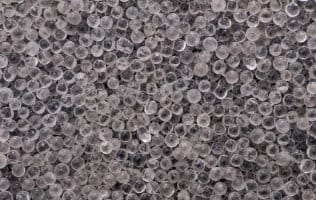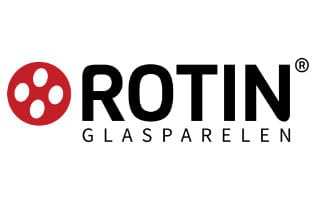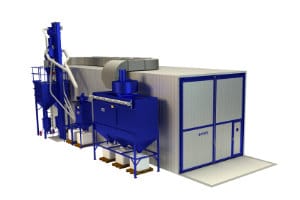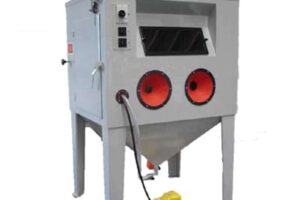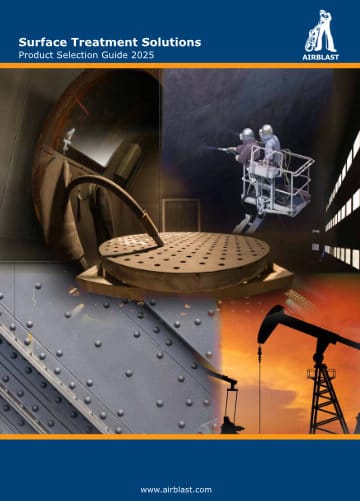What is glass bead blasting and how does it work?
Glass bead blasting is a type of abrasive blasting that uses small beads made of glass as the abrasive media to clean, smoothen, or finish surfaces. This method is particularly valued for its ability to create a smooth, polished surface, without creating a roughness profile or damaging the base material.
Applications
Glass beads are a non-metallic blasting media, which can be used on various substrates like steel, aluminum and stainless steel. The purpose can be both esthetical as functional:
- Glass bead blasting is effective in removing contaminants like rust, oil, dirt, and light coatings from surfaces, without creating a surface profile on the work piece.
- To esthetically improve the surface and create a matte satin like finish on stainless steel.
- Removing the blue heat marks from welding or bending marks on stainless steel.
- Smoothening the surface of (stainless) steel, making it difficult for dust and contaminants to stick onto. The surface stays cleaner and is easier to clean as well.
- Improving the fatigue life of metal components by peening.
- When using the right equipment and correct glass beads a roughness acceptable for the food grade and medical industry can be achieved.
- Improving resistance against corrosion.
On stainless steel the glass bead blasting can be the final treatment of the object, but it also creates a good basis for powder coating.
Roughness and pressure
With normal grit blasting or sandblasting, the goal is often to clean the substrate and create an anchor profile for the coating to adhere. With glass bead blasting the goal is to lower the roughness and polish the surface.
Glass bead blasting is performed in a blast room or blast cabinet and the glass beads can be reused / recycled. When using glass beads as the blasting media, the pressure is normally set at a relatively low level, from 2,5 to 5 bars. This way the glass beads gently polish the surface for the best result and the glass beads have a better durability.
The glass beads are normally rather fine in grain size as compared to other blasting media. Typically glass beads 100-200 um (or 0,10 to 0,20 mm) are used, but also even finer glass beads when food grade specifications need to be achieved.
With normal glass bead blasting a roughness of RA = 1,5 um can be achieved at low pressures. When using the Rotin principle in combination with Rotin beads, roughness of RA < 0,8 um are possible.
ROTIN Blasting Principle
With the Rotin blast nozzle, glass bead blasting without stains or bead blasting to very low roughness within the parameters set by the food- and medical industry are possible. The ROTIN blasting principle is developed by Cees Kalfsvel from Holland after years of experience in glass bead blasting.
How Rotin works
Normal blast nozzles use a straight narrow jet, which have a hotspot of beads impacting within the blasting pattern. There will always be the operators risk of incorrect overlap of his blasting passes, creating ugly stains on the stainless steel work piece.
The rotating insert (ROTIN) is placed before the blast nozzle. This insert widens the rotating jet proportionally, and sprays it at an angle. The hotspot of beads impacting within the blast pattern is eliminated. The surface will be blasted with a wide uniform rotating jet at equal intensity at every angle.
Rotin blasting is done with a finer abrasive at a lower pressure (2,5 – 3 bars) for the best result.
Advantages of Rotin blasting principle
- The ability to blast stain-free. Stains, clouds or spots, are the biggest headache of every glass-bead blaster. When blasting (larger) surfaces on stainless steel it is difficult to get the desired result the first time. Often the work needs to be checked in daylight and then (partly) re-blasted again, costing time and money. Especially on stainless steel, it is rather difficult to remove those stains again. With the Rotin principle the correct result is obtained the first time.
- Inexperienced blasters can obtain the same results as experienced skilled blasters. Bead blasting stainless steel should normally be left to the experienced and skilled blaster (if available), but with the Rotin this job is made easy for anybody.
- Very low roughness levels can be achieved. For the food industry the roughness should ideally be between Ra 0,20 – 0,60 um, because with a higher (or lower) roughness levels, dirt and bacteria will adhere to the machinery. When blasting with Rotin at low pressure in combination with fine glass beads, these parameters for the food industry can easily be achieved. The same applies to the demanding medical industry.
- Esthetically appealing result. The Rotin creates a smooth result without any visible patches, streaks or edges. Even on large stainless steel surfaces. From every angle the finished product will look good.
Conclusion
For cleaning contamination, rust or old coating layers on steel, normal glass bead blasting with a standard grain size will suffice. When bead blasting stainless steel, especially on large surface, we would advise to use the Rotin blasting principe because every blaster can create a stain free finish. When a very low roughness (RA 0,20 – 0,60 mm) for the medical or food industry is required, the Rotin blast principe in combination with very fine abrasive at low pressure is a necessity.
